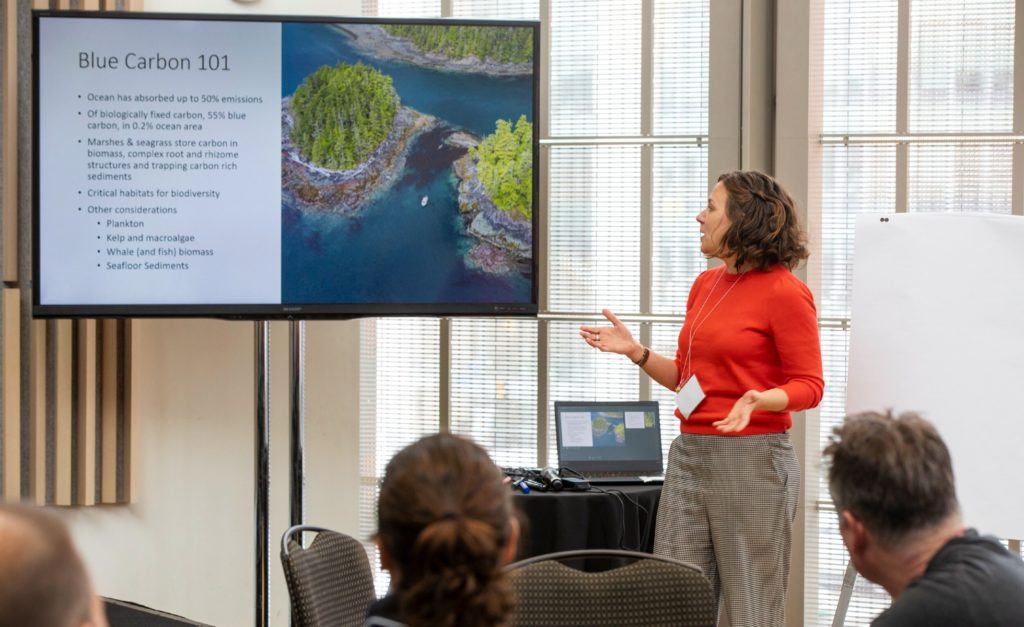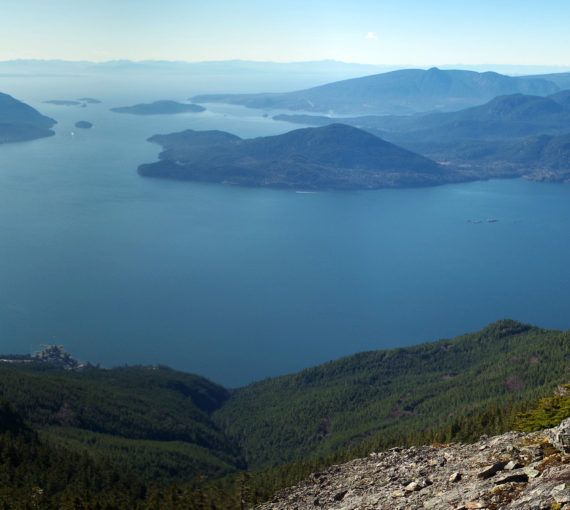
The Nature-Based Climate Solutions Summit in Ottawa in early February showed that addressing climate change and ecosystem degradation together has great potential. (Photo: Sussane Ure)
The growing interest in nature-based climate solutions gives the federal government an opportunity to create transformative change. Governments at all levels are focusing on the climate emergency, and nature plays a major role in resolving the crisis. Implementing nature-based solutions can help rectify imbalances that lead to both climate change and biodiversity loss. The key is to work with ecosystems to support emissions reductions and minimize the demand on crumbling built infrastructure. The federal government should keep its promise to include these solutions in the budget and support financing with science-based policy.
The Nature-Based Climate Solutions Summit in Ottawa in early February showed that addressing climate change and ecosystem degradation together has great potential. This approach will ensure that adaptation and mitigation policies won’t undermine each other and will provide immense co-benefits. Nature-based solutions can provide over 30 per cent of greenhouse gas reductions that Canada needs to meet its international target under the Paris Agreement. Nonetheless, Environment and Climate Change Minister Jonathan Wilkinson says government still needs to learn a lot before nature-based solutions can effectively move into policy and that government will be looking for expert input.
The summit brought together groups that are developing the tools to implement nature-based solutions and provided a platform for government to learn from and share with them. From wetland protection and restoration to integration of natural assets into municipal infrastructure, it showcased many examples of successful projects in Canada. The 400-plus attendees—more than 100 government officials, 50 Indigenous leaders, numerous conservation groups, scientists and businesses—represented a diverse range of knowledge and interests.
To harness the power of nature-based climate solutions, the government should work with groups like the ones represented at the summit to connect budget allocations with science-based policy.
To harness the power of nature-based climate solutions, the government should work with groups like the ones represented at the summit to connect budget allocations with science-based policy. Experts argue that government must meet its promise to include $300-million in the 2020 budget for these solutions and continue allocating a total of $3-billion over 10 years. The information shared at the summit should define how this commitment could roll out and be measured.
Current government efforts include the commendable initiatives to plant two billion trees and implement nature-based climate solutions around wetlands and urban forests. Providing science-based guidance and federal funding will be crucial to these programs’ success in contributing to solutions for climate change and species loss.
Nature-based infrastructure projects can provide benefits to people, such as storm-water management, while restoring nature by bringing habitat back to a city and helping people adapt to climate change impacts like increased flooding. These solutions also support co-benefits like increased physical and mental health, better property values and reducing excess heat in cities. However, infrastructure grants from the federal and provincial governments are funded under a structure that favours concrete and steel infrastructure projects over nature-based solutions.
The climate and environmental policies often work in silos that impair their ability to achieve their objectives.
Despite the interest and potential, the current landscape of nature-based initiatives and funding is fragmented. The climate and environmental policies often work in silos that impair their ability to achieve their objectives. The prevailing regulations and funding mechanisms zero in on emissions or creation of capital assets rather than working with nature to combat climate change and ecosystem degradation simultaneously. These mechanisms often fail to account for the co-benefits that come with nature-based solutions. If this disconnect persists, Canada will have hard time meeting international environmental goals, and the declines will continue.
Nature-based climate solutions have been recognized internationally, and Canada is in a unique position to lead the way. It holds 28 per cent of the world’s boreal zone within its borders and its boreal forest is home to 25 per cent of the world’s wetlands. They provide rich habitat for wildlife and store enormous amounts of carbon. Moreover, these astonishing natural landscapes dotted with cities and towns are key to our Canadian heritage and identity. These gems are in trouble as habitat is being degraded and infrastructure is wearing out.
Canada is at a crossroads. We can grow nature-based solutions or hinder their development. Scientists agree that we must restore Canada’s degraded landscapes to meet species protection, climate control and reconciliation goals. To get it done, the government needs to commit sufficient funding for climate action, nature conservation and biodiversity protection in the upcoming federal budget, or risk losing critical time in the race for our planet’s health.
This op-ed was originally published in The Hill Times
Our Work
Always grounded in sound evidence, the David Suzuki Foundation empowers people to take action in their communities on the environmental challenges we collectively face.



